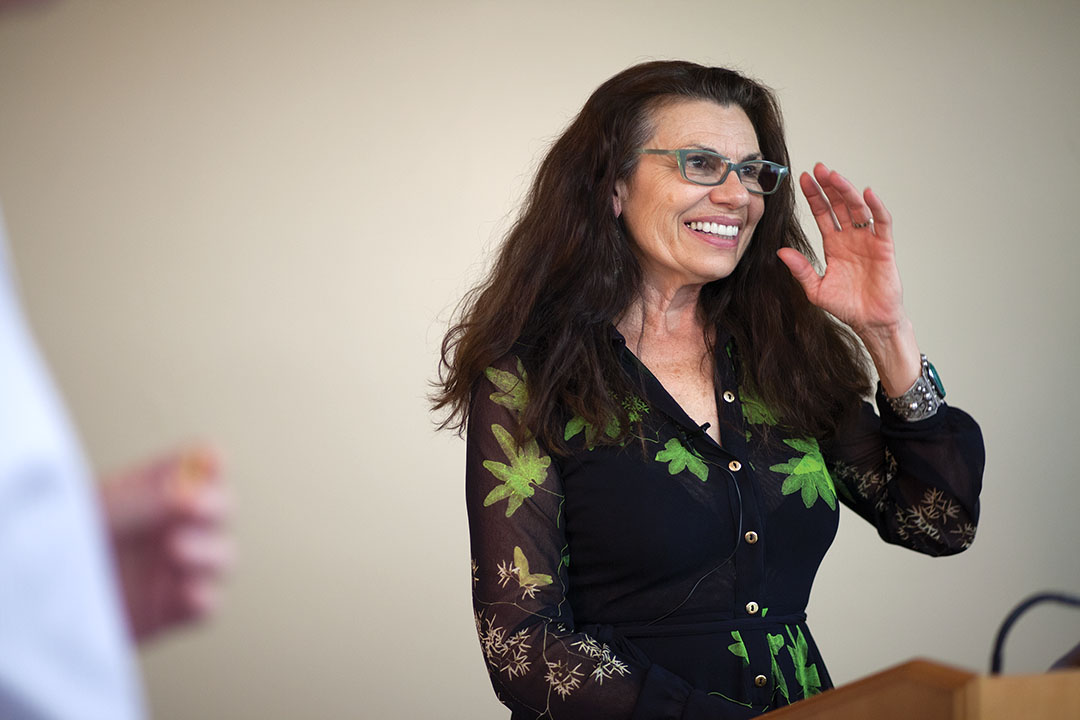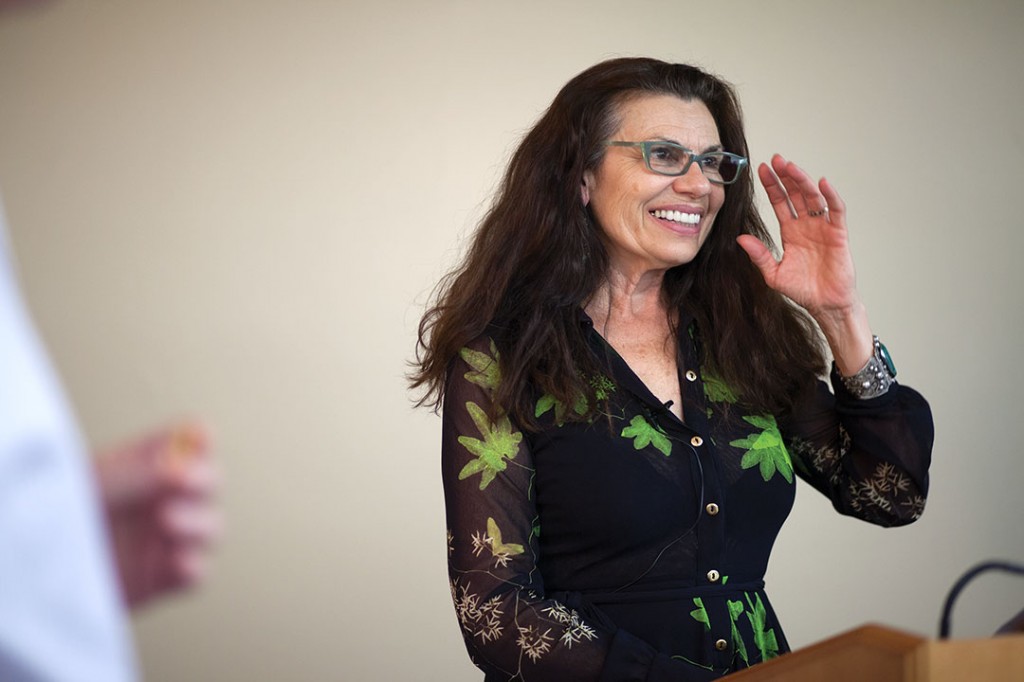

Photojournalist Maggie Steber once attended a birthday party in Havana with Fidel Castro and ate grilled goat on a little farm with Nobel Prize-winning author Gabriel Garcia Marquez. Later she fell in love with Haiti, which she calls “haunted, magical, beautiful, tortured … a singular place.”
For the past three years, the award-winning photographer has taught at the University of Miami’s School of Communication. At the end of this semester, Steber will return to her primary passion – photography.
“I’m a freelance photographer and If I continue to teach here I think I would have to make the decision to totally devote myself to teaching because I don’t want to short-shrift the students … I have some projects I’d like to do and I can’t devote myself to right now because I have an obligation to my wonderful students.”
Students like alumna Cayla Nimmo were inspired by Steber’s obligation to her students.
“Maggie is the kind of professor whose dedication extends far beyond office hours,” said Nimmo, who graduated in visual journalism in 2013. “She would sit for hours going through portfolios and writing letters of recommendation.”
Born and raised in Texas by a single mother, Steber worked 30 hours a week while being a full-time college student. Then, armed with a degree in journalism and a certificate in photography, she landed her first job at the Galveston Daily News where she did everything: writing headlines, obituaries, police reports and of course, taking photos.
“I think I was so lucky to have that job because I learned how to write as well as photograph. And I also found out that I’m not really much of a small town gal … [so] I went to New York to seek my fortune,” Steber said.
She applied for a job at the Associated Press (AP), which was then male-dominated.
“They were under enormous pressure to hire a woman picture editor … They hired me and I loved it,” she said. “I could write a caption like that and I was good at it under pressure.”
AP sent Steber to cover the Olympics in Moscow, Sarajevo and Canada as well as other high-profile assignments.
“Just writing good captions took me all over the world,” she said, laughing.
She left AP to freelance in Africa. Later, for the 25th anniversary of the Cuban Revolution, Newsweek sent Steber to Cuba with Patricia Sethi, a journalist, who was determined to interview Fidel Castro.
Then she turned her cameras on Haiti in 1986 and kept going back. Last year, a group of her students created a website showcasing Steber’s work in Haiti. The website is audacityofbeauty.com.
“It’s not so much that you choose Haiti, but it chooses you,” Steber said. “If she doesn’t want you there she will do everything in her power to make you run screaming to the airport … But it’s worse if she chooses you because she really wrings you out, she wrings your heart out and she wrings your pocketbook out and you get gray hairs and wrinkles from working in Haiti … If you can survive that you have been given a huge gift.”
Her images of Haiti won the prestigious Alicia Patterson Foundation grant and a collection of those photographs was published in “Dancing on Fire: Photographs from Haiti.”
From 1999 to 2003, Steber worked at The Miami Herald as assistant managing editor for photography.
In 2007, she received a grant to design a newspaper prototype at the Knight Center for International Media at UM.






